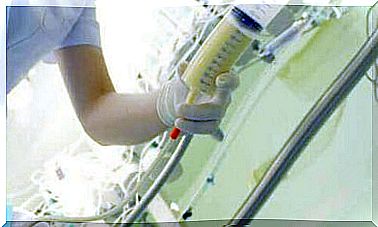Diagnosis Of Dyslexia

Diagnosing dyslexia is a process that does not usually happen quickly. On the contrary, skilled health professionals devote a lot of time to defining this disorder because diagnosis opens up a number of possible treatment methods and future approaches for them.
The quality of life of a person with dyslexia may be good, but this factor depends largely on the early detection of dyslexia as well as subsequent support. Multidisciplinary treatments are the key to integrating the patient into normal and social life.
What is dyslexia?
Diagnosing dyslexia begins with defining the disorder. It is basically a learning disorder, especially in reading and writing, that begins in childhood and is related to the lack of achievement of certain parameters that are expected at each stage of a child’s age.
What is amazing here is that people with this disorder usually do not have an associated problem that would explain the difficulty of reading from outside. In other words, no physical or mental changes are observed in the patient that would be able to define those learning difficulties.
A dyslexic child does not learn the alphabet and has difficulty recognizing words letter by letter. The sounds of the words also become strange to him, and it creates serious obstacles to understanding the reading to the extent that the child begins to change the syllables as he reads, swaps them for others, or distorts them. When the child himself then perceives his difficulty in interpretation, reading slows down and becomes hesitant.
Some dedicated researchers focus on defining that disorder with the ability to decipher the message. In other words, a child with dyslexia has not developed the ability to adopt the code that others speak, so something in him or her stops the word from changing into a meaning that the child understands.

Symptoms
Getting a diagnosis of dyslexia is complicated because it depends entirely on the interpretation of health professionals. As no confirmatory evidence of this disorder has been found in its entirety, criteria are collected to determine the presence of the disorder.
Difficulties with reading
This is perhaps the first and most visible sign. The child reads poorly because he or she uses several failed tools to understand the supposed meaning of the words.
In other words, he swaps letters, edits syllables, rotates words and pronunciations, repeats and reads very slowly. It is possible that at the end of reading, the child does not know what the text is trying to say because the sounds of the alphabet do not correspond to the cognitive meaning already developed in his mind.
Difficulties with writing
Undoubtedly, reading difficulties also affect writing. Dyslexia repeats the mistakes outlined in the previous section when it’s time to write down thoughts on paper. Letters are omitted, syllables are changed, punctuation is absent, or they are placed in places that make the text difficult to read or even impossible to understand.
The syntax, or sentence theory, of a child with dyslexia is poor because he or she does not have the right tools to express himself or herself. Sometimes the style in which a child writes also gets worse, which in turn is a sign of the child’s difficulty understanding what he or she has read and written. However, this is not the case in all cases.
Targeted reading and writing disorder
It is not uncommon for children with reading difficulties to arouse teachers ’curiosity that they perform well in almost all subjects except languages and mother tongue. Thus, it is by no means a question of intellectual developmental disability, as in a large part the maturation of the child’s various developmental areas is within the expected parameters.
Barriers to achieving lexical tasks
In a school that happens to be the main place to detect dyslexia, students with this disorder are not able to perform tasks that require language skills correctly. For example, if they are asked to distinguish uppercase from lowercase letters or look for certain words in a word maze, for example, they are unlikely to be able to perform this task properly.
This problem of organization and sequencing sometimes extends to other more mathematical and geometric areas, although this is not the case in all cases. As this difficulty extends to other areas, the child does not learn multiplication and division, let alone organize the days of the week in the correct order.
Changed behavior
Dyslexia can be suspected and diagnosed when high levels of stress affect children’s lives through difficulties in school. The mere fact of delaying a child’s development compared to other peers is usually enough to trigger visceral and emotional symptoms.
Behavioral disorders can even be minimized in school. It can be immediately assumed that children’s behavioral disorders are the result of their lack of interest in learning or vice versa. Gradually, a child with reading difficulties becomes a secondary in the class with whom no one wants to waste time because he or she is not learning anyway.
There are patients who have been diagnosed with depression even before the dyslexia itself is detected, and in this situation, a misdiagnosed case delays access to professional help to treat dyslexia. They may even be prescribed medications that do not help at all.

Who owns the diagnosis of dyslexia?
In the absence of complementary diagnostic methods leading to diagnosis, such as magnetic resonance imaging or brain examination, we may ask: to whom does the diagnosis of dyslexia belong and how?
Within learning disorders and their approach, we can say that the experts trained for this task are psychopedogists, speech therapists, and neuropsychologists. Through joint tests and assessments, multidisciplinary teams of experts can gather sufficient information to help raise doubts about the existence of this reading difficulty.
After all, the report signed by this group of experts is a testament to the diagnosis, as well as a positive response to the appropriate stimuli for dyslexia, supporting the opinion of the experts. The next step is the commitment of both the family and the educational institution to adapt the child’s information acquisition process depending on the child’s own starting points and situation.
In this sense, it is also not advisable to shy away from meetings with psychopedagogy experts in schools and health centers. Getting a diagnosis of dyslexia at an early stage can completely change a child’s entire future development.









